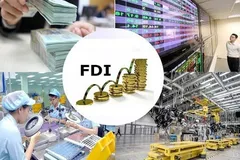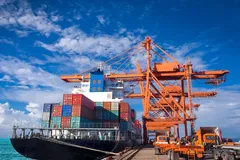
Yet, beneath the surface of this buoyant financial environment, a familiar imbalance persists—capital continues to flow to large corporations while small and medium-sized enterprises (SMEs) remain marginalised.
Credit Growth Accelerates Amid Abundant Liquidity
Figures from the State Bank of Vietnam (SBV) reveal that by the end of May 2025, total credit in the economy had expanded by 6.52%—almost triple the 2.41% recorded over the same period in 2024. This equates to over VND 1 quadrillion in new loans issued in just five months, pushing the total outstanding credit within the banking system to in excess of VND 16.6 quadrillion. It marks the highest credit level for this point in the year in recent memory.
In Ho Chi Minh City, Vietnam’s economic engine, the SBV’s Region 2 branch reported total outstanding credit of approximately VND 4.085 quadrillion as of late May, reflecting a 3.6% increase from the end of 2024 and a 13.2% rise year-on-year.
The central bank has set an ambitious nationwide credit growth target of 16% for 2025, aiming to inject an additional VND 2.5 quadrillion into the economy. To ensure momentum, the SBV has proactively allocated credit growth quotas to commercial banks from the start of the year.
Policy measures are being synchronised with broader macroeconomic objectives. Under Resolution 154—detailing the major tasks for implementing this year’s socio-economic development plan and state budget—the SBV is tasked with managing credit expansion to underpin growth while keeping inflationary pressures in check. Discussions are ongoing about issuing additional credit quotas to banks with the capacity to lend more aggressively.
Interest rates in the interbank market have also trended favourably. In May, overnight interbank rates averaged 3.81%. By early June, the rate dipped as low as 2.83%, before edging back to 3.24% on June 11—still notably below the May average. With policymakers signalling a commitment to maintaining low borrowing costs to aid recovery, the lending environment is expected to remain benign in the near term.
Commercial banks, for their part, have launched a series of preferential credit programmes since early 2025. Nine lenders have committed to a VND 145 trillion social housing loan initiative, which offers fixed-rate mortgages at 6.1% per annum—two percentage points below the average medium- to long-term rate at Vietnam’s four largest state-owned banks—for young buyers under the age of 35. These rates are guaranteed for the first five years of the loan.
Other credit schemes are targeting key sectors of the economy. A VND 100 trillion package is being channelled into agriculture, forestry and fisheries, with 15 banks participating. A larger VND 500 trillion programme, involving 21 banks, is focused on financing strategic infrastructure projects such as roads, power networks and digital infrastructure, with interest rates reduced by at least 1 percentage point relative to conventional long-term lending.
SMEs Still Face Stiff Barriers to Credit Access
Despite the influx of capital into the economy and the emergence of targeted lending schemes, the country’s SMEs remain largely excluded from the credit boom. These firms—estimated to make up over 90% of all Vietnamese businesses—continue to struggle with structural obstacles that have plagued their development for years.
Executives at leading banks confirm that most new lending has flowed toward major corporates and large-scale infrastructure developers, particularly those with government backing or involved in national priority projects. One senior figure at a major state-owned bank, speaking on condition of anonymity, noted that his institution had registered credit growth of 9.1% as of June 10—an outperformance compared to peers—driven primarily by targeted lending to large clients in alignment with state objectives.
Recent months have seen a string of high-profile lending agreements between banks and corporate giants, many of them developers or contractors in the country’s infrastructure push. These deals, while aiding credit expansion figures and economic activity, do little to alleviate the credit constraints faced by smaller firms.
Mr Mạc Quốc Anh, Vice Chairman and General Secretary of the Hanoi Association of Small and Medium Enterprises, cited the association’s internal survey conducted in 2024, which found that 67% of member companies faced serious hurdles in securing loans. The main barriers included insufficient collateral, prohibitive interest rates, and cumbersome loan approval processes that are often time-consuming and opaque.
Compounding the problem is a cautious lending stance among banks in the wake of rising non-performing loans and a stagnant property sector. Lenders, wary of credit risk, are increasingly channelling funds toward safer, better-capitalised borrowers. As a result, SMEs—often deemed riskier due to their limited financial buffers—find themselves sidelined.
The cost of borrowing is also a burden. Real interest rates on SME loans currently hover between 9% and 12% per annum, far higher than the ASEAN regional average by two to four percentage points. For startups and businesses engaged in green technology or digital transformation—sectors prioritised by policymakers—this level of financing cost is unsustainable.
Many SMEs, particularly those in early-stage development or transitioning to more sustainable models, are unable to absorb such interest burdens. The consequence, in many cases, is business stagnation or outright withdrawal from the market.
These conditions expose a growing disconnect between policy intentions and practical outcomes. While macro-level policies and targets paint a picture of inclusive growth, the lived experience of SMEs tells a different story. The persistent credit bottlenecks reflect deeper structural issues that require more than capital injections—they demand reform.
Financial institutions must develop bespoke lending products that cater to the specific risk profiles and capital needs of SMEs. At the same time, the SBV and other regulatory bodies must streamline documentation and approval procedures and provide clearer risk-sharing frameworks to encourage greater lending to this vital business segment.
Ultimately, if Vietnam is to achieve balanced and sustainable economic growth, it must ensure that the overwhelming majority of its businesses—its SMEs—are not left behind in the credit race.




















